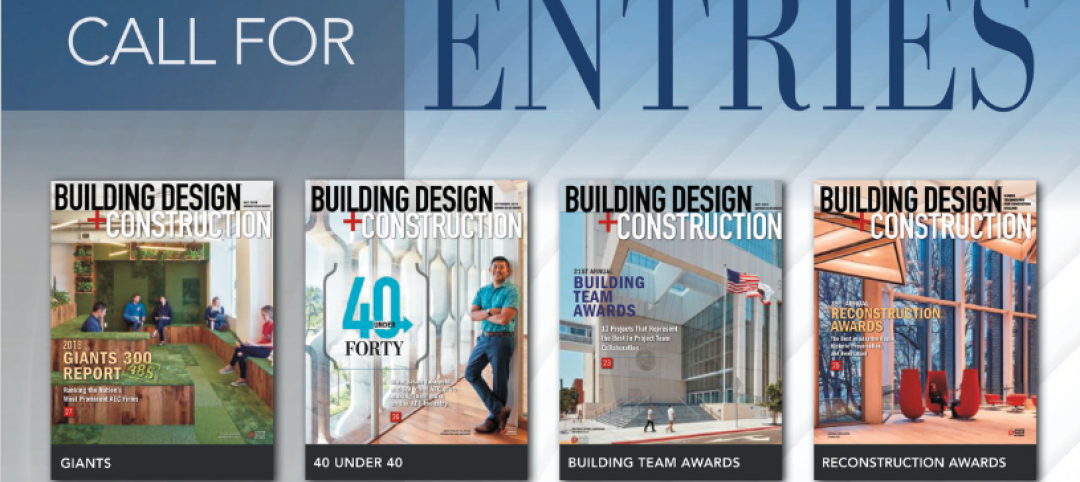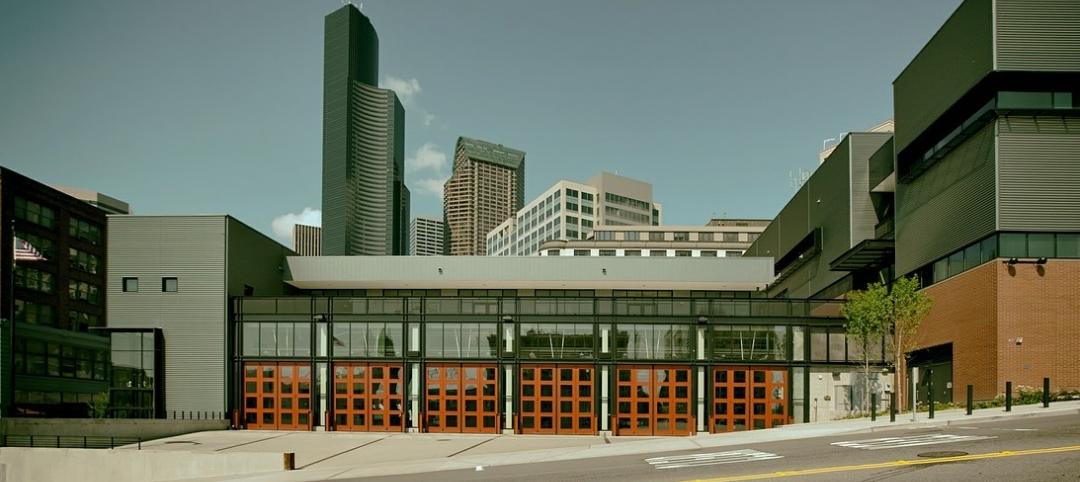“Bad libraries build collections, good libraries build services, great libraries build communities.”
That statement by R. David Lankes, a professor at Syracuse University’s School of Information Studies, was a bit controversial when he tweeted it back in February of 2012.
But now, in July of 2019, it seems as though many architects and designers agree; a library should go beyond being just a collection of books, and instead become all-inclusive community learning centers (with the key word here being “community”).
And what better way to highlight the community aspect than to incorporate it directly within (or, in some cases, above) the library itself.
Related content: Top 110 Cultural Sector Architecture Firms
Related content: Top 70 Cultural Sector Engineering Firms
Related content: Top 65 Cultural Sector Construction Firms
Both the Milwaukee Public Library and the Brooklyn Public Library have recently completed or are nearing completion on branches that, in addition to their collections of books, also include features such as maker spaces, recording studios, and apartment units.
The HGA-designed Mitchell Street Branch of the Milwaukee Public Library, created from the former Hills Department Store originally built in 1919, is a shining example of the library design direction many municipalities are champing at the bit to head in.
The library, which occupies 23,000 sf across the ground level, mezzanine, and lower level of the renovated building, isn’t interested in the stereotypical musty spaces filled with librarians who’s glasses are perched precariously on the tips of their noses. Instead of a maze of domineering stacks filled with suppressive shushers, the Mitchell Street library provides bright, open spaces capable of hosting events like, say, a Mexican-style professional wrestling show dubbed “Crush the Shush.”
In addition to quarreling luchadores, the Mitchell Street library also includes amenities such as a maker space with tech lockers, a graphics workstation, a 3D printer, and audio mixing equipment; a recording booth; and a kitchen for demonstrations on healthy cooking and eating.
‘Bad libraries build collections,
good libraries build services, great
libraries build communities.’
— R. David Lankes, Syracuse University School of Information Studies
A highly visible storefront display area connects people on the street to the activities occurring within and design details such as restored historic elements and roll-up doors painted by local youth artists combine to create a bright, transparent interior that forgoes the typical library aesthetic.
Other amenities include a 120-person community room, a young adult zone, an open children’s area, a staff workroom with automated material handling, an intergenerational living room with a fireplace, and a mezzanine reading balcony. And to top it all off, literally and figuratively, 60 market-rate apartments are located on the upper floors to create a brand new living and learning community under one roof.
Similarly, the Sunset Park Branch of the Brooklyn Public Library (slated for a December 2020 completion and designed by Magnusson Architecture and Planning) comprises eight stories and 21,000 sf. The library encompasses the first two and a half floors of the building, while the remaining five and a half floors house 50 affordable residences for qualified low-income occupants. Reading spaces, learning spaces, and a community room are also included in the design.
Libraries aren’t the only cultural buildings getting in the community spirit
But libraries aren’t the only cultural facilities branching out and trying to offer more than has been expected of them in the past. Spaces for performing arts on university campuses are beginning to adapt and embrace interdisciplinary pedagogy. Take Macalester College’s new Theater, Dance, and Classroom building, designed by HGA, for example. Located in St. Paul, Minn., the new building links to the adjacent Olin-Rice Science Center to provide both a physical and a symbolic connection between the arts and the sciences.
The building includes a flexible performance space that allows for different seating and performance configurations, a 2,400-sf dance studio, and a smaller theater that can serve as a black box studio. And while you will find everything you would expect in a performing arts building, the new space also includes nine flexible classrooms that serve as teaching areas for classes ranging from the humanities to science.
The goal for performing arts spaces such as the Theater, Dance, and Classroom building, is to break down the walls between what were once disciplines on opposite ends of the spectrum, allowing them to instead work together and create a completely new learning experience. Similar to the ideas guiding library design, creating well-rounded cultural building communities is of the utmost importance.
MORE FROM BD+C'S 2019 GIANTS 300 REPORT
Related Stories
AEC Tech | Feb 13, 2020
Exclusive research: Download the final report for BD+C's Giants 300 Technology and Innovation Study
This survey of 130 of the nation's largest architecture, engineering, and construction firms tracks the state of AEC technology adoption and innovation initiatives at the AEC Giants.
Giants 400 | Jan 26, 2020
2020 call for entries: BD+C awards programs DEADLINES EXTENDED!
NOTE: Due to the delays related to COVID-19, we have extended the submission deadlines for Giants 300 surveys, Building Team Awards, and 40 Under 40. Please email David Barista at dbarista@sgcmail.com with any questions or concerns. Thanks!
Giants 400 | Jan 23, 2020
Government Buildings Sector Giants Report for 2019 [Updated]
AECOM, HOK, Jacobs, and Turner Construction top the rankings of the nation's largest government buildings sector architecture, engineering, and construction firms, as reported in Building Design+Construction's 2019 Giants 300 Report.
Esports Arenas | Dec 23, 2019
2019 Sports Facilities Sector Giants Report: These ain’t your grandpa’s sports stadiums
eSports stadiums may only house a fraction of the fans compared to traditional stadiums, but when it comes to fan-centric technology they are second to none.
Reconstruction & Renovation | Nov 6, 2019
The silent giant: Reconstruction sector makes big impact on firms
More than a quarter of AEC firms that participated in the 2019 Giants 300 survey earned at least half of their total 2018 revenue from the reconstruction sector.
Giants 400 | Oct 25, 2019
Top 55 Airport Sector Construction Firms for 2019
Hensel Phelps, AECOM, Turner, Skanska, and PCL top the rankings of the nation's largest airport terminal sector contractors and construction management firms, as reported in Building Design+Construction's 2019 Giants 300 Report.
Giants 400 | Oct 25, 2019
Top 60 Airport Sector Engineering Firms for 2019
Jacobs, Arup, Burns & McDonnell, Ghafari Associates, and Kimley-Horn head the rankings of the nation's largest airport terminal sector engineering and engineering architecture (EA) firms, as reported in Building Design+Construction's 2019 Giants 300 Report.
Giants 400 | Oct 25, 2019
Top 50 Airport Sector Architecture Firms for 2019
AECOM, Gensler, HNTB, Corgan, and HOK top the rankings of the nation's largest airport terminal sector architecture and architecture engineering (AE) firms, as reported in Building Design+Construction's 2019 Giants 300 Report.
Giants 400 | Oct 25, 2019
2019 Airport Terminal Giants Report: Airport construction propelled by massive redevelopments
Multi-billion-dollar expansions are repositioning aging facilities to accommodate growing passenger demand. This and more trends from BD+C's 2019 Giants 300 Report.
Giants 400 | Oct 24, 2019
Top 80 Retail Construction Firms for 2019
PCL, VCC, Whiting-Turner, Shawmut, and W.E. O'Neil top the rankings of the nation's largest retail sector contractors and construction management firms, as reported in Building Design+Construction's 2019 Giants 300 Report.

















